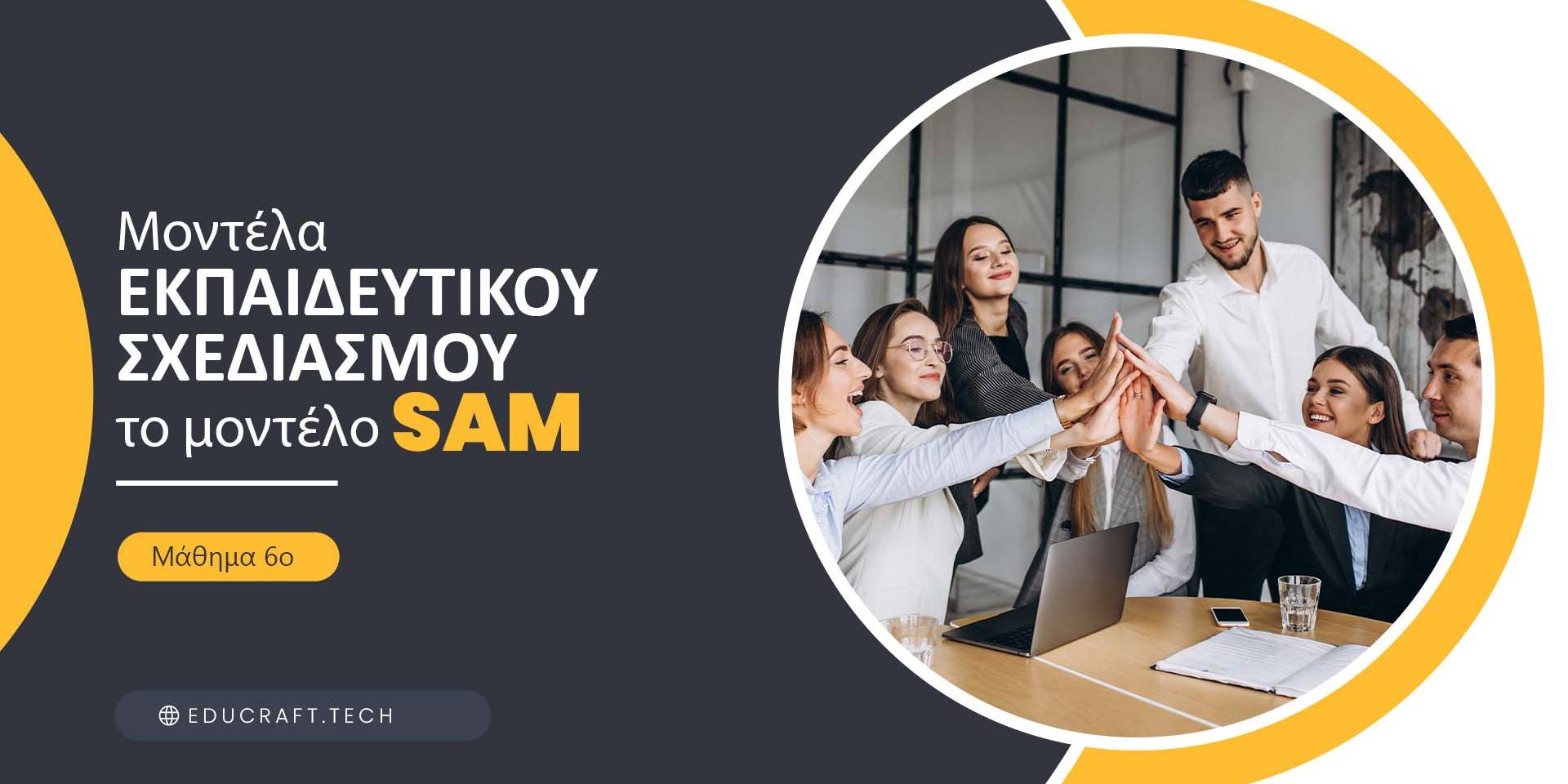SAM (Successive Approximation Model). One of the most well known Instructional Design models that people use to create quality educational solutions. This article will help you recognise SAM’s usefulness and drawbacks, if any, as well as outline the process you need to follow to use it successfully. Finally, you will recognise the situations where you shouldn’t use this model. So, let’s dive deeper into SAM’s world.
SAM emphasizes the creation of a functional prototype. This prototype will be the reference point for developing the entire product.
This prototype is why the Successive Approximation Model is called this way. The prototype is the “approximation” of the completed version desired by the customer, while the development of the final product takes place in small, “successive” steps.
SAM approaches the design and development in smaller, more flexible steps that are part of a more extensive process for creating educational solutions.
Developing using SAM
SAM is divided into three steps, or to be more precise, three phases:
- preparation,
- iterative design,
- iterative development.
You may be wondering why is it iterative design and development and not just design and development? Because these phases happen over and over again. Creating an educational product using SAM isn’t a linear process. It’s more like circling from one phase to the other. So let’s look at them in more detail.
Preparation
During the Preparation phase, information about the learning audience’s profile is collected. This process is part of the learning analysis that requires extensive research. As the scope of this article isn’t to present how to conduct a learning analysis, we shall not analyse it any further. Additionally, the learning goal and the fundamental characteristics of the educational product are determined.
Iterative design
This phase first takes place when the learning design team (the Instructional designers, the graphic designers and the elearning developers) and the client’s SMEs (Subject Matter Experts) meet to discuss the product. They examine every aspect of it, suggest ideas and find solutions to possible issues. This process is known as Savvy Start. It should be emphasised that for the successful implementation of the project, the SAM model presupposes good cooperation between the two teams.
Next comes the beginning of the prototype’s creation.
First, the learning design team creates the initial draft of the product in written format, known as Storyboard; You should note that this is not the final Storyboard, as the Storyboard will change a lot during the design process. When the initial version of the Storyboard is ready, the development of a working prototype starts.
The prototype is the reference point on which the SMEs will give feedback.
Next, the SMEs have to take a look at the prototype. The SMEs will evaluate the initial proposal of the learning design team and give them feedback. It’s also expected that the SMEs will make suggestions to the prototype, contributing to the design of the final solution. SAM believes that errors are standard and expected, as they will lead to the necessary adaptations desired by the customer.
Then, the learning design team will use the SMEs’ proposals and feedback to improve the prototype to match their needs and requirements.
This way, as Subject Matter Experts are involved in the development process from an early stage, it is certain that the final product will fully meet their needs. At the same time, SMEs’ involvement in the process reduces the possibility of going out of budget or schedule.
Iterative development
During the iterative development phase, the product is developed and tested. Then, based on continuous feedback, the final product is improved until it becomes functional and technically flawless.
This is done through the production of the three versions of the product.
- Alpha version. This version is the first functional version of the product, on which the learning design team and the SMEs provide feedback and make suggestions. It contains flaws and malfunctions.
- Beta version. This version fixes issues that arose from testing the Alpha version. It is almost flawless, but minor bugs not spotted on the Alpha version can appear.
- Gold Edition. This is the final version of the product. This version does not require any corrections or improvements. Essentially, this is the version given to the client and ultimately used by the learning audience for which it was designed.
Is SAM the best Instructional design model?
SAM’s a great instructional design model that puts an emphasis on rapidly creating a prototype that constantly evolves and improves without compromising the quality of the final product. Its only pitfall is that it demands good cooperation between the various stakeholders involved. This is precisely the issue with SAM. Not all teams can co-operate well, thus making SAM a situational approach.
Remember. There are neither perfect Instructional design models nor methodologies that fit all different projects. You need to be flexible and adaptable and select the approach that suits you best at the given time. Work on each assignment based on its specific needs, considering the people you’ll be working with as well as the project’s requirements.
